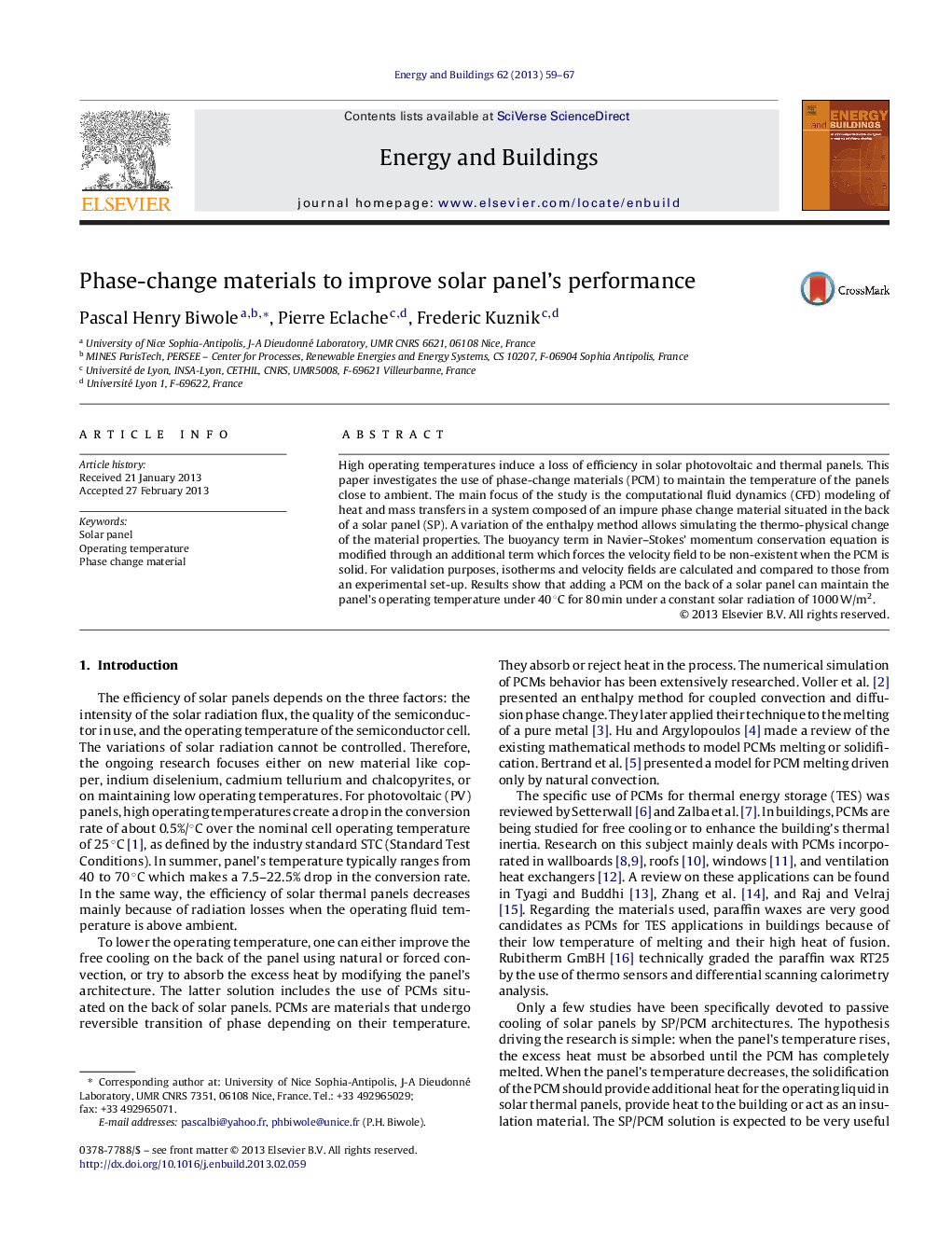| Article ID | Journal | Published Year | Pages | File Type |
|---|---|---|---|---|
| 263263 | Energy and Buildings | 2013 | 9 Pages |
•A volume force was added to the buoyancy term in the Navier–Stokes’ momentum conservation equation.•Using PCM kept panel temperature under 40 °C for 80 min under radiation of 1000 W/m2.•Adding cooling fins does not always help maintaining the panels’ temperature low.
High operating temperatures induce a loss of efficiency in solar photovoltaic and thermal panels. This paper investigates the use of phase-change materials (PCM) to maintain the temperature of the panels close to ambient. The main focus of the study is the computational fluid dynamics (CFD) modeling of heat and mass transfers in a system composed of an impure phase change material situated in the back of a solar panel (SP). A variation of the enthalpy method allows simulating the thermo-physical change of the material properties. The buoyancy term in Navier–Stokes’ momentum conservation equation is modified through an additional term which forces the velocity field to be non-existent when the PCM is solid. For validation purposes, isotherms and velocity fields are calculated and compared to those from an experimental set-up. Results show that adding a PCM on the back of a solar panel can maintain the panel's operating temperature under 40 °C for 80 min under a constant solar radiation of 1000 W/m2.
